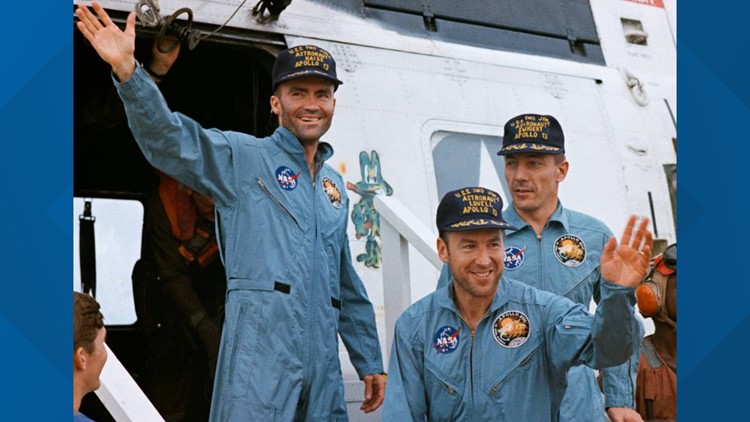ST. PETERSBURG, Fla. — Fifty years have come and gone since the safe touchdown of the Apollo 13 crew, after five words caught the nation by storm: “Houston, we’ve had a problem.”
That’s the transmission astronaut James Lovell sent to Mission Control during the 1970 flight, 175,000 miles from the Earth’s surface after an explosion rocked the spacecraft, cutting their power and oxygen.
The three-astronaut crew of Lovell, Jack Swigert and Fred Haise were headed for the Frau Mauro’s (crater) highlands on the moon when the explosion occurred. The crew, needing to abandon their plans, looped the moon and used their engine speed to begin their return to Earth.
Then began the grueling 36 hours until splashdown.
According to NASA, multiple teams took shifts monitoring the mission and communicating with Lovell, Haise and Swigert during their return. The crew slept in shifts to always make sure someone was on watch.
The three also advised they believed they had enough food last the remainder of the mission.
For the first hours, NASA says the crew powered down certain systems, took the opportunity to recharge the Odyssey’s battery power and warmed up the thrusters.
With just under seven hours left in their approach to Earth is when NASA said Swigert began the reactivation process while Lovell began to align the Odyssey to be prepared for their final mid-course maneuver. This lined up the spacecraft for re-entry into Earth’s atmosphere.
RELATED: Apollo 13 by the numbers
It was when the crew was 44,000 miles from Earth that they got their first look at the damage.
According to NASA, Lovell exclaimed “there’s one whole side of that spacecraft missing. Right by the high gain antenna, the whole panel is blown out, almost from the base to the engine.”
NASA said Haise had fewer words to describe the sight: “it’s really a mess.”
Next, the crew prepared to part from the Aquarius, their lunar module, to help propel themselves to safety. That’s when the spacecraft hit the atmosphere at more than 24,000 miles per hour, a rate of speed that caused atmospheric molecules to ionize-- causing what is known as the “blackout,” according to NASA.
Communication between the crew and Mission Control was lost for several minutes before coming back on.
Multiple parachutes deployed, and after nearly 143 hours in flight, Mission Control erupted in joy-- the crew had splashed down in the Pacific Ocean, safely.
The crew was recovered and taken aboard a U.S. Navy ship, where they were given medical checks and got the chance to talk to their loved ones. NASA said the astronauts even received a call from then President Richard Nixon.
It’s one of those moments those who lived through it will never forget.
After an investigation, NASA said the accident review board determined that warning signs during testing went unheeded. The board determined when the voltage was raised on the heaters in the oxygen tanks, the thermostatic switches were not modified to meet the change. Additionally, during one of the final tests, wiring was subjected to very high temperatures and the tank was damaged from eight hours of overheating.
RELATED: American astronauts get date to launch from U.S. soil for the first time in almost 10 years
- Seminole nursing home evacuated after 3 resident deaths and 36 positive COVID-19 cases
- Will Florida schools reopen soon?
- President Trump pushes states to lift coronavirus restrictions
- 10Investigates gets an inside look into Sarasota Memorial Hospital's COVID-19 unit
- All New Yorkers ordered to wear masks in public
- Hotlines, websites offer the latest on COVID-19
FREE 10NEWS APP:
►Stay In the Know! Sign up now for the Brightside Blend Newsletter





